This spring I received a phone call from a friend of mine up here, whose growing interest in birds I’ve been nurturing. “I just saw some kind of duck fly by, it was being chased by Ravens” was what he told me.
It was unusual that there’d be any sort of duck around, given that there was still 3 or 4 feet of ice on the ocean, and all the lakes were still solid. The nearest open water was up at the floe edge, probably about a hundred kilometres north of us. My friend thought it was a mitiq, which generally applies to one of the eiders. They have their own names, but in the vernacular it works fine for either.
It was coffee break time anyway, so I jumped in the truck to see if I could find it. Longer story shorter (which I wrote about here), I found it and was startled to find out that the Ravens (Corvus corax) had not only chased it, but they had caught it, killed it, and were in the process of eating the adult King Eider (Somateria spectabilis) when I came along.
So some Ravens here hunt and kill at least some of their food. How common is it? And is it just a subset of the rather substantial population here? Consider this. Last fall three Ravens chased, knocked to the ground and pinned an adult Gyrfalcon (Falco rusticolus). They were pecking at it while pinning it to the ground when it was rescued. The Gyrfalcon was rehabilitated and released after a short period of time. It appears, at least on the face of it, that this was more than mobbing of a substantial predator.
The day of the predation of the King Eider I happened to have an elder in my office. When I related the story of it to him, he told me that a group of Ravens had recently started hunting Arctic Hares (Lepus arcticus) in the vicinity of our dump. He had witnessed them cooperatively hunting, cornering and killing hare, which they consumed.
That same day a friend of mine told me of a pair of Raven attempt to catch a Rock Ptarmigan (Lagopus mutus) while he was hunting. They were unsuccessful, but to him they were clearly trying to hunt it.
Now I realize that these incidents do not amount to anything more than anecdotal evidence, but after a few days ago I’ve been less likely to dismiss it. Over in Victor Bay more friends of mine observed Ravens chase down another Raven, drive it to the ground where they killed it and ate it. The day before it was an Arctic Hare they saw killed an eaten.
So what has gotten into our, rather large, songbirds? Well Ravens have long been opportunistic. Though widely viewed as scavengers (an important niche in life, and one that they fill very well), they are more than that. I’ve watched them glean insects (crane flies) from the Tundra, and they are known to rob nests of eggs and nestlings. This is a tough place for a year round resident to find food. Ravens are intelligent and problem solvers, it doesn’t take a huge leap to think that at least some of them have figured out that there is a living to be made hunting other animals.


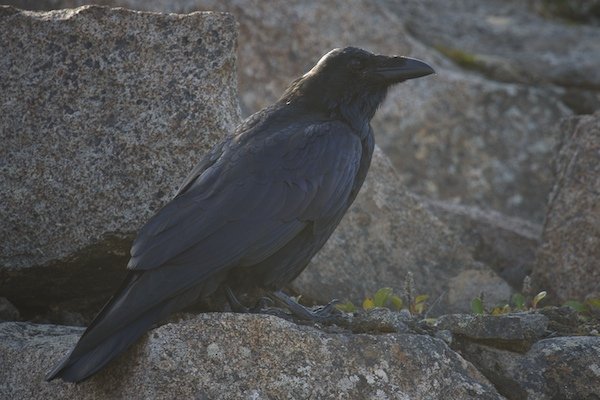
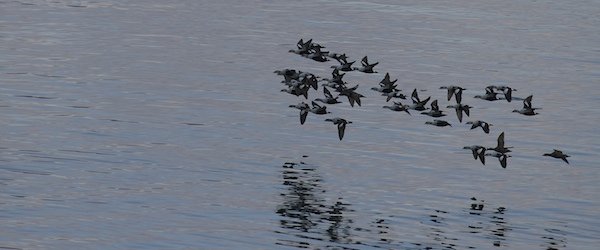

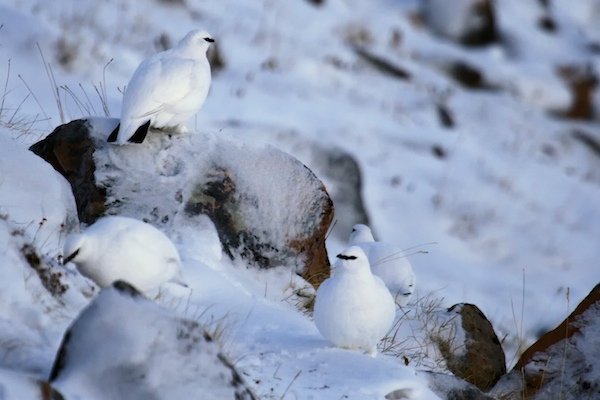
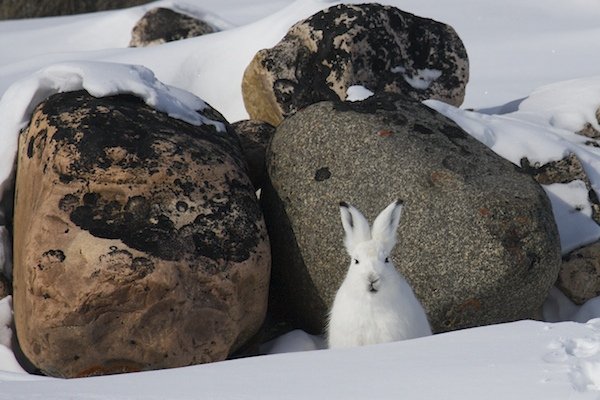
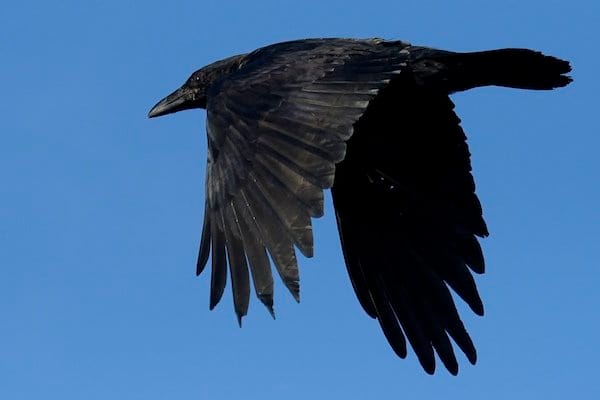











Over recent years we have discovered that Torresian Crows can no longer be trusted when we are banding shorebirds. We used to be very wary of Brahmniy Kites, but now we only release large numbers of shorebirds at a time-safety in numbers-and only when there are no other birds about. They soon learn that something is going on under the shadecloth on the beach.
Those corvids sure don’t take long to figure out things do they Clare?
Fascinating. The fact they take a variety of live prey isn’t surprising in itself, but taking a large adult duck in flight? That’s impressive. I guess hunting in groups might be the key factor; it’s hard to imagine a single raven could manage on its own.
It would be interesting to know if they’ve developed any cooperative hunting techniques which are any more sophisticated than simple weight of numbers.
At my elementary school, we have a large group of Ravens and Crows who keep our playground clean of spilled food. We’ve long joked that the Ravens are big enough to carry off a Kindergartener. I guess we’d better be ready now . . .
Seriously though, it doesn’t really surprise me. I’m sure where food is plentiful, Ravens eat what’s around but up in your area, Clare, I’m not surprised that they eat in a wide variety of ways. They are impressive birds.
Brilliant post, Clare. I’m both fascinated and frightened by the concept of pack-hunting Ravens. What I wonder is whether there has been any uptick in this kind of behavior or if ravens have always been this aggressive.
I’m not surprised by this. I’ve seen crows kill young rabbits here in Minneapolis. Also, when the crows are feeding, whether at the feeder or raiding dumpsters in the alley, there is always a “look out.” One bird is always in the tree and if it senses danger–it caws a warning. Try it the next time you see a flock and just take a moment to stop and watch them–you should hear cawing overhead and the others will scatter.
Doesn’t seem like a leap at all that larger ravens would figure out how to gang kill larger game.
I have also watched crows kill rabbits in East Tennessee. It takes them a long time to peck the rabbit to death but they are patient. Talked to a hunter who told me that it was impossible to hunt crows alone since they recognized a man with a gun. Don’t know why one would want to hunt crows but if you do, get three guys with guns to go into the woods and then have two leave. Apparently, crows can’t count that well.
And ravens, would not be surprised if they hunt cooperatively. I have watched them play together on updrafts in the Smoky Mountains taking turns doing barrel rolls and then soaring back to the end of the line.
I should have a look at the book we have on raven behaviour — think there’s other evidence of ravens hunting. We bought it after I found some marks in the snow one winter that seemed to show a raven had hunted and flown off with a ground squirrel. (http://fawnahareo.com/2006/11/09/stories-in-the-snow/)
Interesting and WOW WOW
@Harry. I’ve seen them work cooperatively to steal food out of a dog’s bowl, with one Raven dancing in front of the dog at the end of it’s chain and the others feeding from the bowl. It would not surprise me in the least that they have more sophisticated techniques.
@Liza. They are indeed impressive birds. I suspect that there is a subset that has learned this behaviour. With 300+ Ravens in town (winter population) I would think if they all did it we’d see it more often.
@Mike. I wonder that as well, there certainly seems to be more, but perhaps I’m just paying attention now.
@Sharon. For sure, they are bright problem solving birds. You wonder what it takes to make the leap from eating something already dead to doing it in.
@spiderxray. That is also a good strategy for entering a hide or blind. Two walk in, one leaves. A variation is for the one to leave to carry a jacket or shirt out on a hanger.
@Fawn, One of the Bernd Heinrich’s book?
@Wes, Thanks.
It occurs to me that it is about time that Hollywood did a remake of Hitchcock’s “The Birds”….
Good post!
Now I’m starting to wonder; we frequently see several crows chasing an eagle. They harass the eagle, pull feathers out, yell until the eagle leaves. I’ve seen one lone crow repeatedly dive-bombing to peck the top of an eagle’s head, and swooping up and out of range before the eagle could respond.
No ravens around here, but there are thousands of crows. How many crows would it take to down an eagle, I wonder. And how long before they figure it out?
I was watching a report about sharks coming closer to land than ever before and attacking humans, and I wondered if maybe their natural food is being usurped by us hungry humans, leaving us as the next best thing. Perhaps the same thing is happening with the ravens – they’re branching out and learning new skills and techniques in order to expand their culinary repertoire, as it were. Just a thought.
Great post – thanks.
An educational post, to say the least. I saw a group of ravens in Scotland scavenging a dead rabbit. I now wonder if it was, indeed, an act of scavenging or if they’d hunted the animal themselves before I came onto the scene. I’ve seen cooperative hunting by crows here in the Northwest, but obviously of much smaller prey.